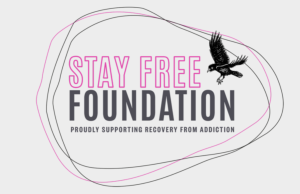Regulation, taxes and donors all in the danger zone
One of my favorite songs is “Something’s Coming” from West Side Story: “Could it be, yes it could. Something’s coming, something good.” For the nonprofit sector, something is coming, but it definitely won’t all be good. And, note that the fellow, “Tony,” singing ends up dead.
Perhaps a better anthem would be Camila Cabello’s “Something’s Gotta Give:”“Something’s gotta give, something’s gotta break. But all I do is give and all you do is take.”
What Happens to Funding?
The impact of the Tax Cuts and Jobs Act (TCJA) enacted at the end of 2017 is just beginning to be felt. The TCJA increased the standard deduction so that many taxpayers no longer need to itemize their deductions. An estimated 21 million taxpayers no longer receive a tax benefit for their charitable contributions.
While donors give for many reasons, contributions by individuals dropped in 2018 by 3.4 percent in inflation-adjusted dollars after increasing by 3 percent in 2017, despite the continuing strong economy in both years. The TCJA was almost certainly a factor, even though the charitable deduction itself, thanks to intense lobbying by the sector, avoided the TCJA axe.
Taxpayers have now filed their returns for 2018, and those who weren’t previously aware might have noticed that they no longer receive a tax deduction for charitable contributions. The effect of the TCJA changes might increase with each year returns are filed.
The TCJA affects donors unevenly. The highest-income donors will continue to itemize and receive tax benefits for their donations while many middle-class donors will not. Charity leaders need to consider the sources of their philanthropic support and seek to adjust accordingly.
Tax incentives for bequest income were also slashed by the TCJA, which roughly doubled the exemption from the estate tax to cover estates of about $11 million ($22 million for married couples). As a result, it is estimated that only a few thousand estates each year will pay estate tax at all.
Charitable bequests from estates reduced the taxable estate dollar for dollar, which was a powerful incentive, now almost entirely gone. While bequest income remained flat in 2018, the impact of this change too may well grow each year as individuals have time to redo their wills.

On the bright side, corporate and foundation giving was not affected by the TCJA and should continue to increase, fueled by the strong economy and stock market. However, many economists fear that the bull market of 10 years — double the length of the average bull market — is heading for a fall. A possible presidential impeachment, the ongoing tariff war with China, and shifting relationships with former allies do not contribute to the stable climate that gives businesses and investors confidence.
As in the past, an economic decline likely would both reduce philanthropic support and increase the demand for services from many types of nonprofits. Nonprofit leaders should have a contingency plan for such a scenario.
The TCJA also has implications outside of incentives for giving. Because of the TCJA’s tax cuts, the deficit is ballooning despite the strong economy. The federal deficit in 2019 was the largest in seven years, and the 2020 deficit is expected to top $1 trillion for the first time. The continuing pressure to cut the federal budget poses a severe threat to charities. With so much of the budget consumed with fixed payments and funds already committed, human services and other nonprofit funding is always at risk.
On the Expense Side…
Human capital is the largest cost for most nonprofits. The long-awaited Fair Labor Standards Act final rule released in September will increase the cost of compensation for nonprofits with lower-paid staff who work long hours. Effective January 1, 2020, employees earning less than $35,568 will be entitled to overtime pay at one-and-a-half times the employee’s regular rate of pay for all hours worked beyond 40 hours in a workweek, no matter the employee’s job responsibilities. The current limit is $23,600. The impact could have been broader — the rule previously proposed under the Obama administration would have increased the limit to $47,500, plus provided for an automatic update every three years.
An issue on which the nonprofit sector can hope for relief in 2020 is the infamous qualified transportation fringe benefit tax, also known as the “parking tax,” although it also applies to public transportation. This is the tax enacted as part of the TCJA that, illogically, is imposed on nonprofits’ expenses, not income, spe-estcifically on expenses for parking, public transit, and related benefits provided to employees, whether the nonprofit pays for these benefits at its own expense or simply allows employees to deduct money from their compensation to pay for the benefits on a pre-tax basis.
This tax has forced many nonprofits to file a Form 990-T and pay tax, including quarterly estimated tax, for the very first time. The outcry has been vociferous, especially from churches, many of which own parking lots. Legislation to repeal the tax was approved by the House Ways and Means Committee this past June, and there is reason for hope that when an appropriate legislative vehicle can be found, the tax will be repealed.
Speaking of tax, the Internal Revenue Service’s (IRS) Priority Guidance Plan for the coming year, released on Oct. 8, lists a number of projects under the TCJA on which the IRS plans to release guidance. In addition to the parking tax, which ideally will have been repealed and thus making moot the need for guidance, these include how to address the TCJA’s unrelated business income tax provisions for nonprofits with multiple lines of unrelated businesses, the excise tax on nonprofit compensation over $1 million, the excise tax on college and university endowments, and much more.
Stay tuned.
E-Filing, Transparency, Oversight
Thanks to a new law, all nonprofit organizations that must file Form 990 information returns (Forms 990, 990 PF, 990-EZ, and 990-T) will have to do it electronically beginning with returns for calendar year 2020. Fiscal year filers must file electronically for returns covering tax years beginning on and after July 2, 2019.
Nonprofits can prepare and submit their own returns electronically using IRSapproved tax preparation software, which will definitely require advance planning if the forms are not already being filed electronically, or by engaging a tax professional who uses approved software.
Electronic filing will broaden public access to data with the goal of promoting greater transparency and accountability. Nonprofits managers should expect state and federal regulators, charity watchdogs, academics, journalists, and donors to scrutinize excessive salaries, conflicts of interest, and other Form 990 line items. It will be important for nonprofits to treat the Form 990 as a public relations document and use it to tell their stories. Meanwhile, these forms of oversight will continue to gain in importance as the IRS budget still will not allow for much enforcement through audits of individual nonprofits.
Mission and Need
The time of change and disruption in which we are living implicates almost every nonprofit’s mission, from unemployment to immigration to clean air and water to the arts to research and development of rational policies and solutions. One thing that won’t change in 2020 is society’s continuing need for the work of the nonprofit community.
The headwinds affecting nonprofit revenue must be surmounted through innovative thinking and ways to capture the imagination of new donors and younger generations — a challenge for 2020 and for years to come.
Cynthia M. Lewin is a partner at Venable LLP, and chair of the Nonprofit Organizations practice and her email is [email protected]








